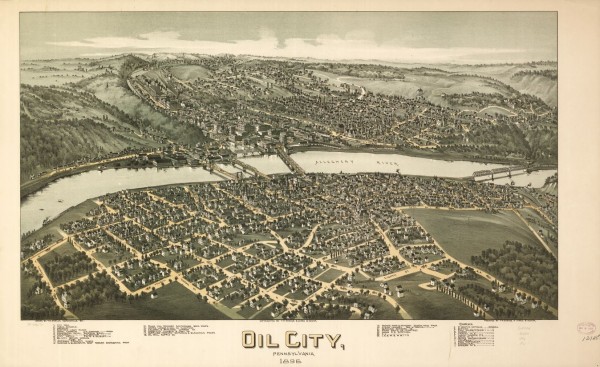by Bruce Wells | Jul 29, 2025 | Petroleum Art
Cartoonist Victor Hamlin worked as an oilfield cartographer in the Permian Basin.
The widely popular Depression Era newspaper comic strip character Alley Oop began in the imagination of a young cartographer who drew Permian Basin oilfield maps in Texas.
The club-wielding Alley Oop caveman appeared for the first time in the summer of 1933 when Victor Hamlin, a former Ft. Worth Star-Telegram reporter, published fanciful tales about the Stone Age Kingdom of Moo. Hamlin began syndicating his daily cartoon in Iowa’s Des Moines Register.
(more…)
by Bruce Wells | Feb 11, 2025 | Petroleum Art
Artist Bob “Daddy-O” Wade used petroleum pipelines to create a Texas landmark.
With more than 2.5 million miles of oil and natural gas pipelines crisscrossing the United States, an offbeat Texas sculptor in 1993 repurposed about 70 feet to create a work of art.
Many Texas travelers at some point have witnessed the monumental sculptures of Bob “Daddy-O” Wade, known for “keeping it weird” since he made the scene in Austin in 1961. Decades of giant artworks by “Daddy-O” have reflected his unusual Texas sense of scale. (more…)
by Bruce Wells | Dec 14, 2024 | Petroleum Art
Cartographer visited petroleum boom towns to draw popular bird’s-eye views.
Thaddeus M. Fowler created detailed, panoramic maps of America’s earliest petroleum boom towns during the late nineteenth and early twentieth centuries. His popular cartographic depictions of oil patch communities in Pennsylvania, Oklahoma, and Texas offered “aero views” seemingly drawn from great heights.

More than 400 Thaddeus Fowler panoramas have been identified. There are 324 in the Library of Congress, including this one of Oil City, Pennsylvania, in 1896. Source: Library of Congress Geography and Map Division, Washington, D.C.
Fowler has the largest number of panoramic maps in the collection of the Library of Congress (LOC) in Washington, D.C. His hand-drawn lithographs have fascinated viewers since the Victorian Age. Being depicted in one of Fowler’s maps, also known as “bird’s-eye views,” was a matter of civic pride for many community leaders. (more…)


